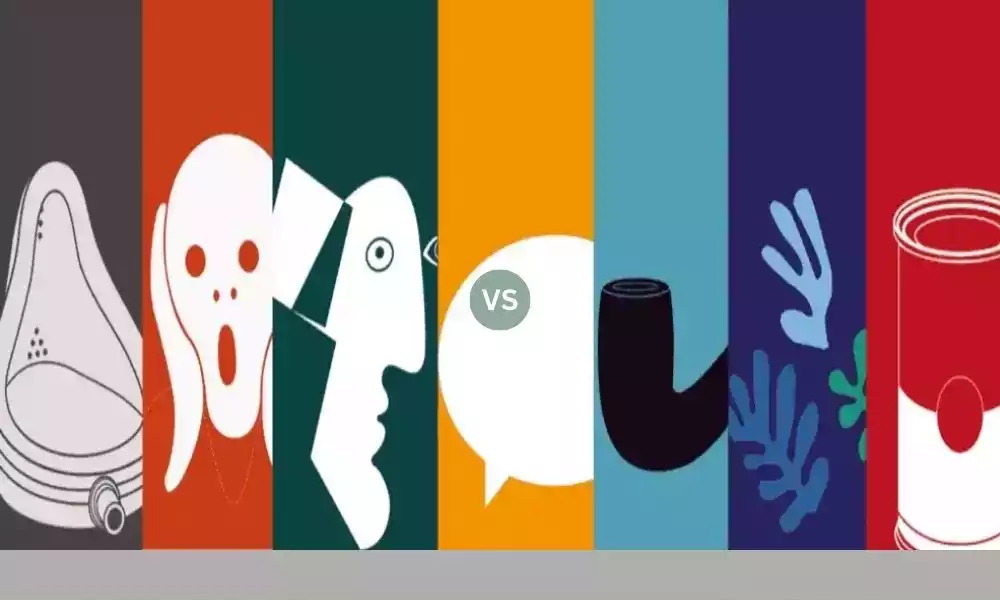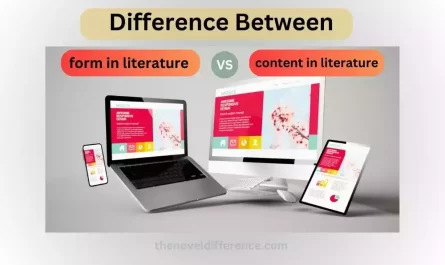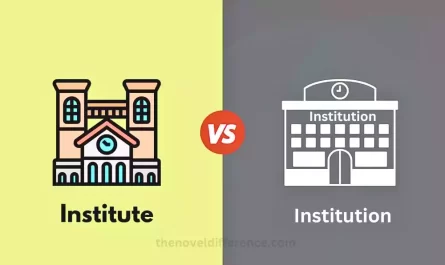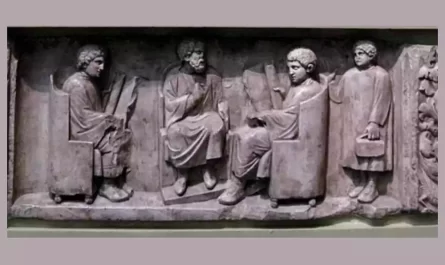Definitions of Modernism and Postmodernism in Literature
modernism in literature:
Modernism or “Modern Literature,” was an intellectual movement that emerged at the turn of the 19th century in both Europe and North America. It represents a departure from traditional literary forms, conventions, and themes prevalent during the preceding periods.
Modernist writers sought to break away from the established norms and explore new possibilities in literature by experimenting with language, form, and content.
Modernist literature is characterized by a range of innovative techniques and features. It often exhibits a fragmented narrative structure, nonlinear timelines, and multiple perspectives.
Modernist writers also employed a stream of consciousness, where the inner thoughts and experiences of characters are presented in a free-flowing and introspective manner.
The use of symbolism, allusion, and ambiguity is prevalent in modernist works, aiming to convey deeper meanings and evoke emotional responses from readers.
Modernist literature often portrays disillusionment with society’s evolving social, cultural, and political climate of its time. It examines themes like the loss of traditional values, industrialization and urbanization’s effect, as well as our fragmented sense of identity in today’s globalized world.
Modernist writers often depicted characters who struggled with alienation, existential crises, and the search for meaning in an increasingly complex and uncertain society.
Prominent modernist authors include James Joyce, Virginia Woolf, and T.S. Eliot (who all share T.S. Eliot as one of their protagonists). Eliot, F. Scott Fitzgerald, and Samuel Beckett.
Their works, such as “Ulysses,” “To the Lighthouse,” The Waste Land,” The Great Gatsby,” and Waiting for Godot,” showcase their experimental yet introspective nature.
Postmodernism in Literature:
Postmodernism is an intellectual movement that emerged during the middle 20th century in response to Modernism and as its opposite movement. It represents a departure from the principles and conventions established during the modernist period and challenges the notions of objective truth, authorial authority, and traditional narrative structures.
Postmodernist literature is characterized by a rejection of grand narratives and universal truths. Instead, it embraces fragmented and multiple perspectives, acknowledging the subjectivity and plurality of human experiences.
Postmodernist authors often employ metafiction as an expressive form, blurring the distinctions between reality and fiction and including elements that draw attention to storytelling itself.
Postmodernist literature stands out by engaging language, intertextuality, and cultural references with humor and irony. It employs parody, pastiche, and collage techniques, combining diverse elements from high and low cultures to create new and unconventional narratives.
Postmodernist writers often deconstruct language and meaning, questioning the stability and transparency of words, and highlighting the constructed nature of reality.
In terms of themes, postmodernist literature often explores skepticism towards authority and institutions, challenging the dominant power structures and questioning established norms.
It celebrates diversity, hybridity, and multiculturalism, emphasizing the fluidity and hybrid nature of identities and cultures. Postmodernist works explore simulacra and hyperreality – wherein there is an erosion between reality and simulation – by employing simulacrum as well as hyperrealism as concepts to explore these themes.
Mark Z.Danielewski, David Foster Wallace, Toni Morrison, Don DeLillo, and Italo Calvino all made significant contributions as postmodern authors.
Their works, such as “House of Leaves,” “Infinite Jest,” “Beloved,” “White Noise,” and “If on a Winter’s Night a Traveler,” exemplify the postmodernist characteristics of fragmentation, intertextuality, and playful subversion of traditional literary conventions.
Significance of understanding the differences between modernism and postmodernism in literature
Understanding the differences between modernism and postmodernism in literature is significant for several reasons:
- Historical Context: Modernism and postmodernism represent two literary movements that emerged during different historical epochs. Modernism emerged during the late nineteenth and early twentieth centuries. Postmodernism appeared in the middle of the 20th century. Understanding literary movements allows readers to contextualize literary works within their historical and cultural environments, providing further insights into society’s social, political, and intellectual climate at that particular point in history.
- Evolution of Literary Forms: Modernism and postmodernism represent significant shifts in literary forms, techniques, and styles. Modernist literature challenged traditional storytelling methods and experimented with fragmented narratives, subjective perspectives, and unconventional structures. Postmodernist literature, on the other hand, further pushed the boundaries by deconstructing narrative conventions, playing with metafictional elements, and embracing intertextuality. Understanding these evolutions allows readers to appreciate the innovative approaches taken by writers in each movement.
- Different Philosophical and Aesthetic Concerns: Modernism and postmodernism reflect distinct philosophical and aesthetic concerns. Modernist literature often grapples with themes of disillusionment and alienation in an ever-evolving world, along with finding meaning amid change. Postmodernist literature, by contrast, questions notions of objective truth, challenges authority, and explores the fragmented nature of reality and identity. Recognizing these differences helps readers engage with the underlying ideas and ideologies conveyed in the works.
- Influence on Contemporary Literature: Modernism and postmodernism have had a profound impact on subsequent literary movements and contemporary literature. Many contemporary writers draw inspiration from both movements or respond to their ideas. By understanding the differences between modernism and postmodernism, readers can trace the literary lineage, identify intertextual references, and appreciate how contemporary authors engage with or deviate from these earlier traditions.
- Critical and Analytical Frameworks: Modernism and postmodernism provide readers with essential analytical frameworks that enable them to interpret and comprehend literary texts more readily. It equips them with tools to identify narrative techniques, thematic concerns, and stylistic choices employed by writers in each movement. This understanding enhances the depth of literary analysis and enables readers to engage with the complexities of the texts on a deeper level.
Understanding the distinctions between modernism and postmodernism in literature enhances our reading experience, helps contextualize literary works, and gives insight into their development, philosophical concerns, and impactful influence on contemporary literary works.
Characteristics of Modernism
Modernism in literature is characterized by several key features that distinguish it from earlier literary movements.
These characteristics include:
- Experimentation and Innovation: Modernist writers sought to break away from traditional forms and conventions. They experimented with new narrative techniques, structures, and styles of writing. This experimentation often involved fragmentation of narratives, nonlinear storytelling, and the use of stream of consciousness to convey the inner thoughts and experiences of characters.
- Rejection of Traditional Values: Modernist literature reflects a sense of disillusionment and a rejection of traditional societal and cultural norms. It challenges established beliefs and values, often depicting characters who are alienated, disenchanted, or disillusioned with the world around them. This refusal of traditional values was directly connected with the rapidly shifting social and cultural conditions during the early 20th century.
- Subjectivity and Individual Consciousness: Modernist literature places a strong emphasis on the individual’s consciousness and subjective experience. It explores the inner thoughts, perceptions, and emotions of characters, often delving into their complex psychological states. Modernist writers were interested in depicting the inner workings of the human mind and the fragmented nature of individual identity.
- Reflection of the Fragmented Modern World: Modernist literature reflects the fragmented and chaotic nature of the modern world. It often portrays characters who feel disconnected from society, highlighting the disintegration of traditional social structures and the challenges of navigating an increasingly industrialized and urbanized environment. This fragmentation is mirrored in the fragmented narrative structures and non-linear storytelling techniques employed by modernist writers.
- Exploration of Time and Memory: Modernist literature often plays with notions of time and memory. It incorporates nonlinear timelines, flashbacks, and shifts in perspective to convey the complex relationship between past, present, and future. Modernist writers were interested in the subjective experience of time and memory, as well as how these elements shape individual and collective identities.
- Critique of Society and Culture: Modernist literature frequently includes social and cultural critiques. This film examines the effect of industrialization, urbanization, and technological progress on individual lives and interpersonal relationships. Modernist writers frequently expressed a feeling of disillusionment and unease over society’s direction and the abandonment of traditional values.
Notable examples of modernist literature are James Joyce’s “Ulysses”, T.S. Eliot’s The Waste Land, and James Baldwin’s novels such as Americanah. Eliot’s “The Waste Land,” Virginia Woolf’s “To the Lighthouse,” F.

Scott Fitzgerald’s The Great Gatsby” and Samuel Beckett’s Waiting for Godot both embody experimental narrative techniques, individual consciousness exploration, and critical engagement with the modern world that characterize modernist literature.
Key Themes in Modernist Literature
Modernist literature explores diverse themes which reflect cultural, social and psychological shifts observable during late 19th and early 20th century America.
Some key themes in modernist literature include:
- Loss and Disintegration of Traditional Values: Modernist writers often depicted a sense of disillusionment and the breakdown of traditional values and beliefs. Erosion resulted from changes in society, such as industrialization, urbanization, and technological innovations. These were perceived to create anxieties and uncertainties for some members. This theme is evident in works like T.S. Eliot’s “The Waste Land,” which portrays a fragmented and spiritually barren world.
- Alienation and Isolation: Modernist literature frequently explores the theme of alienation, depicting characters who feel disconnected from society and struggle to find meaning and connection in the modern world. Anger may arise due to various causes – be they social class differences, cultural preferences, or the dissolution of traditional community structures. Examples of this theme can be found in the works of Franz Kafka and James Joyce.
- Search for Meaning and Identity: Modernist literature often delves into the existential quest for meaning and identity. Characters grapple with questions of self-worth, purpose, and identity in an ever-more fragmented and chaotic environment. Virginia Woolf’s “To the Lighthouse” and F. Scott Fitzgerald’s “The Great Gatsby” explore the search for identity and the longing for fulfillment.
- Nature of Time and Memory: Many modernist works engage with the nature of time and memory, often employing non-linear narrative structures and fragmented chronologies. These techniques reflect the subjective experience of time and memory and highlight the ways in which the past influences the present. James Joyce’s “Ulysses” and William Faulkner’s “The Sound and the Fury” stand as prime examples that explore time and memory’s complexity.
- Representation of the Human Condition: Modernist literature delves into the human condition, presenting characters grappling with the complexities of existence, mortality, and the limitations of human understanding. Albert Camus’ “The Stranger” and Samuel Beckett’s “Waiting for Godot” represent this theme by questioning life’s purpose and our pursuits for their meaninglessness.
- Fragmented Identity and Shifting Perspectives: Modernist literature often explores the fragmented nature of identity and the multiplicity of perspectives. Characters may experience fractured selves, fragmented consciousness, or multiple conflicting identities. This theme is exemplified in works such as Jean Rhys’s “Wide Sargasso Sea” and Ralph Ellison’s “Invisible Man.”
Modernist literature’s themes reflect the complexity and uncertainty of today’s world while offering us valuable insight into human existence in response to rapid social and cultural shifts.
Examples of Modernist Literature
There are numerous examples of modernist literature that showcase the innovative techniques, themes, and styles of the movement.
Here are five notable works of modernist literature:
- “Ulysses” by James Joyce: Ulysses” is one of the classic works of modernist literature and follows Leopold Bloom on an extraordinary adventure through one day in Dublin. Joyce employs a stream of consciousness, multiple narrative styles, and an intricate web of literary allusions to depict the inner thoughts, dreams, and perceptions of the characters.
- “The Waste Land” by T.S. Eliot: This epic poem is a seminal modernist work that captures the disillusionment and fragmentation of post-World War I society. “The Waste Land” employs a collage-like structure, incorporating diverse voices, languages, and cultural references to depict a fragmented and spiritually depleted world.
- “To the Lighthouse” by Virginia Woolf: Woolf’s novel stands as an outstanding example of modernist literature that explores human consciousness and time passage. Woolf explores the inner lives and relationships of her characters through shifting perspectives and interior monologues, delving deep into their minds, desires, and perceptions with impressive clarity.
- “The Great Gatsby” by F. Scott Fitzgerald: This iconic novel is often regarded as a modernist masterpiece. Set in the 1920s, it examines the American Dream, the pursuit of wealth, and the disillusionment of the Jazz Age. Fitzgerald employs poetic language, symbolic imagery, and a fragmented narrative structure to depict the moral decay and elusive nature of the American Dream.
- “Waiting for Godot” by Samuel Beckett: This absurdist play is a key work of modernist drama. It presents a bleak and circular narrative of two characters, Vladimir and Estragon, waiting for a mysterious figure named Godot. Beckett explores themes of existentialism, the meaninglessness of existence, and the limitations of language through minimalist dialogue and a repetitive structure.
These examples highlight the diverse range of modernist literature, showcasing the experimentation with form, narrative techniques, and exploration of existential and societal themes that define the movement.
Characteristics of Postmodernism
Postmodernism can be identified with several hallmark characteristics that set it apart from earlier literary and cultural movements.
These characteristics include:
- Rejection of Grand Narratives: Postmodernism challenges the notion of overarching, universal truths or grand narratives that attempt to explain the world in a comprehensive and objective manner. It critiques and undermines traditional systems of knowledge, such as religion, science, and history, emphasizing the subjective and fragmented nature of human experiences.
- Fragmentation and Multiple Perspectives: Postmodernism embraces fragmentation and the coexistence of multiple perspectives. It rejects the idea of a single, stable reality and recognizes that meaning is constructed through a variety of viewpoints and contexts. Postmodern works often employ fragmented narratives, non-linear storytelling, and shifting points of view to reflect this multiplicity of perspectives.
- Metafiction and Self-Reflexivity: Postmodern literature frequently incorporates self-referential and metafictional elements, blurring the boundaries between fiction and reality. It draws attention to the act of storytelling itself, highlighting the artificiality and constructed nature of narratives. Authors may address the reader directly, include references to their own writing process, or play with the conventions of storytelling.
- Parody, Pastiche, and Intertextuality: Postmodernism employs parody, pastiche, and intertextuality to subvert and reinterpret existing texts and cultural references. It borrows and recontextualizes elements from different sources, mixing high and low culture, and often incorporates irony and humor. Postmodern works may mimic or satirize established literary styles, genres, or cultural icons to challenge and deconstruct traditional forms.
- Skepticism towards Authority and Institutions: Postmodernism questions and challenges traditional sources of authority, including political, social, and cultural institutions. It critiques power structures and exposes their limitations, contradictions, and hidden agendas. Postmodern works often explore issues of identity, marginalization, and the struggles of individuals against oppressive systems.
- Playfulness and Irony: Postmodern literature embraces playfulness, irony, and ambiguity. It rejects fixed meanings and instead revels in ambiguity, paradoxes, and contradictions. Postmodern authors use irony and humor as tools to question and subvert established norms and conventions, inviting readers to engage critically with the text.
Prominent examples of postmodernist literature include Mark Z. Danielewski’s House of Leaves,” David Foster Wallace’s Infinite Jest,” Toni Morrison’s Beloved,” Don DeLillo’s White Noise” and Italo Calvino’s If on a Winter’s Night A Traveler.”
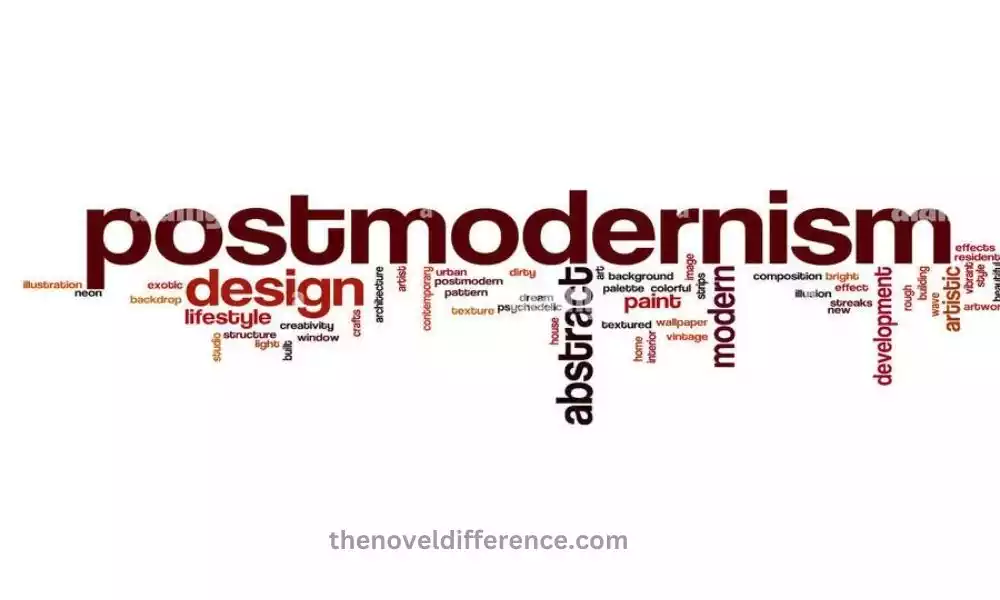
These works exhibit characteristics associated with postmodernism such as subversive storytelling techniques that combine self-awareness, fragmented techniques, and distrust towards traditional authorities or fixed meanings.
Key Themes in Postmodernist Literature
Postmodernist literature explores a diverse set of themes that reflect cultural, social, and philosophical concerns associated with post-World War II era societies.
Some key themes in postmodernist literature include:
- Fragmented Identity and Subjectivity: Postmodernist literature questions the stability and coherence of personal and collective identities. It explores the fragmented and fluid nature of identity, challenging traditional notions of fixed selfhood. Characters often exhibit multiple and shifting identities, reflecting the influence of cultural, social, and historical factors on the construction of identity.
- Deconstruction of Language and Meaning: Postmodernism engages in a playful and critical examination of language and meaning. It explores the arbitrary and constructed nature of linguistic signs and the ways in which language shapes our understanding of reality. Postmodern works often employ wordplay, irony, and intertextuality to highlight the ambiguity and instability of meaning.
- Metafiction and Self-Reflexivity: Postmodernist literature frequently incorporates metafictional elements, blurring the boundaries between fiction and reality. It draws attention to the act of storytelling and the construction of narratives, questioning the authority of the author and the reliability of the narrative voice. Authors may directly address the reader, include self-referential elements, or play with narrative conventions.
- Skepticism towards Truth and Knowledge: Postmodernism challenges the idea of absolute truth and questions the possibility of objective knowledge. It emphasizes the relativity and context-dependence of knowledge, highlighting the subjective and socially constructed nature of truth claims. Postmodernist literature often explores the limitations and biases of various forms of knowledge, including scientific, historical, and cultural discourses.
- Consumer Culture and Mass Media: Postmodernism examines the influence of consumer culture and mass media on society and individuals. It reflects the saturation of popular culture, advertising, and media images in everyday life. Postmodernist works often critique the commodification of culture, the loss of authenticity, and the superficiality of consumer-driven societies.
- Irony, Parody, and Pastiche: Postmodernist literature employs irony, parody, and pastiche as tools of critique and subversion. It engages with and reinterprets existing literary, cultural, and historical texts, often in a playful and ironic manner. Postmodern works may mix and remix various styles, genres, and cultural references, creating hybrid and intertextual narratives.
Postmodernist literature often explores questions of identity, language, and knowledge within the cultural landscape of late 20th and early 21st-century societies. Notable examples of postmodernist literature include works such as “House of Leaves” by Mark Z.
Danielewski has written many noteworthy novels, such as David Foster Wallace’s Infinite Jest; Toni Morrison’s Beloved; Don DeLillo’s White Noise, and Italo Calvino’s If on a Winter’s Night A Traveler Cometh
Examples of Postmodernist Literature
Certainly! Here are five examples of postmodernist literature that showcase the diverse styles, themes, and techniques of the movement:
- “House of Leaves” by Mark Z. Danielewski: This complex and unconventional novel tells the story of a family living in a house that defies the laws of physics. The book employs an inventive multi-layered narrative structure with footnotes, typographical experimentation, and self-reflexivity regarding reading itself.
- “Infinite Jest,” by David Foster Wallace: One of his more ambitious works, this complex tale offers multiple threads and stories exploring themes such as addiction, entertainment, and seeking meaning in life. It employs footnotes, endnotes, and a vast array of cultural references to satirize contemporary American society.
- “Beloved” by Toni Morrison: This Pulitzer Prize-winning novel examines the enduring legacy of slavery through the story of Sethe, a former slave haunted by the ghost of her deceased child. Morrison incorporates non-linear storytelling, multiple perspectives, and the blurring of past and present to explore themes of memory, trauma, and the construction of history.
- “White Noise” by Don DeLillo: A darkly humorous and satirical novel, “White Noise” portrays the anxieties and emptiness of American consumer culture. It features fragmented narratives, and media saturation, and explores the fear of death in a modern, technologically-driven society.
- “If on a Winter’s Night, a Traveler” by Italo Calvino: This postmodern novel is a playful and metafictional exploration of the act of reading. It presents multiple intertwined narratives that are constantly interrupted and playfully subvert reader expectations. Calvino examines themes of storytelling, authorship, and the reader’s role in creating meaning.
These examples demonstrate the diverse range of postmodernist literature, encompassing experimental narrative techniques, intertextuality, self-reflexivity, and a critical engagement with contemporary culture.
Each work exemplifies postmodernist preoccupation with deconstructing traditional forms, challenging established narratives, and exploring human experience in an ever-evolving globalized environment.
Difference between Modernism and Postmodernism in Literature
Modernism and postmodernism are two distinct literary movements that emerged at different historical moments with distinct characteristics and literary genres.
Here is a comparison and contrast between modernism and postmodernism in literature:
- Attitude towards Tradition and Authority:
Modernism: Modernist literature often rejects and challenges traditional forms, conventions, and authority. It breaks away from established norms and seeks to innovate and experiment with new narrative techniques and styles.
Postmodernism: Postmodernist literature takes a more skeptical stance towards authority, including traditional institutions, grand narratives, and fixed truths. It questions and subverts established conventions and challenge the idea of objective authority or universal truths. - Narrative Structure and Storytelling Techniques:
Modernism: Modernist literature often features fragmented narratives, nonlinear timelines, and multiple perspectives. It explores the inner thoughts and consciousness of characters, employing techniques such as stream of consciousness and experimentation with narrative structure.
Postmodernism: Postmodernist literature continues to employ fragmented narratives and multiple perspectives but takes it further by incorporating metafictional elements. Blurring the lines between fiction and reality, emphasizing storytelling techniques, and toying with traditional expectations about narrative conventions are hallmarks of innovative filmmaking. - Treatment of Identity and Subjectivity:
Modernism: Modernist literature explores fragmented identities and individual consciousness. It delves into the inner thoughts, perceptions, and emotions of characters, often depicting the alienation and struggles of individuals in a rapidly changing world.
Postmodernism: Postmodernist literature questions the stability and coherence of identity. It challenges fixed notions of identity and explores the fluid and constructed nature of personal and collective identities. Multiple and shifting identities are often depicted, reflecting the influence of cultural, social, and historical factors. - Engagement with Historical and Social Contexts:
Modernism: Modernist literature often reflects the anxieties and disillusionment of the early 20th century. Critiques the effects of industrialization, urbanization, and traditional value loss on individuals and society as a whole.
Postmodernism: Postmodernist literature addresses issues relevant to life after World War II and our media-saturated world. It investigates how consumer culture, mass media, and technology affect identity formation, meaning-making processes, and reality creation. - Perception of Reality and Representation of the World:
Modernism: Modernist literature presents a fragmented and subjective view of reality. Explores the complexities of human experience, perception, and how best to represent reality.
Postmodernism: Postmodernist literature questions the existence of objective reality and instead highlights the constructed nature of reality. It examines the influence of language, discourse, and cultural constructs on our understanding of the world, often employing irony, parody, and intertextuality to subvert and reinterpret established narratives.
While both modernism and postmodernism challenge traditional forms and conventions, postmodernism takes the deconstruction and subversion of established norms further.
It embraces self-reflexivity, intertextuality, and the fragmentation of narratives to question authority, challenge fixed meanings, and explore the complexities of identity and reality.
Conclusion
Understanding the distinctions between modernism and postmodernism literature are vitally important in order to fully appreciate their respective characteristics, themes, and techniques.
Modernism emerged in the late 19th and early 20th centuries, rejecting traditional forms and conventions while exploring fragmented identities, subjective experiences, and the disillusionment of a changing world.
Postmodernism, which arose in the mid-20th century, further challenged authority, embraced multiple perspectives, and blurred the boundaries between fiction and reality through metafiction, intertextuality, and skepticism towards grand narratives.
Recognizing the individual characteristics of modernism and postmodernism can provide readers with a greater understanding of literary works’ historical and cultural settings.

